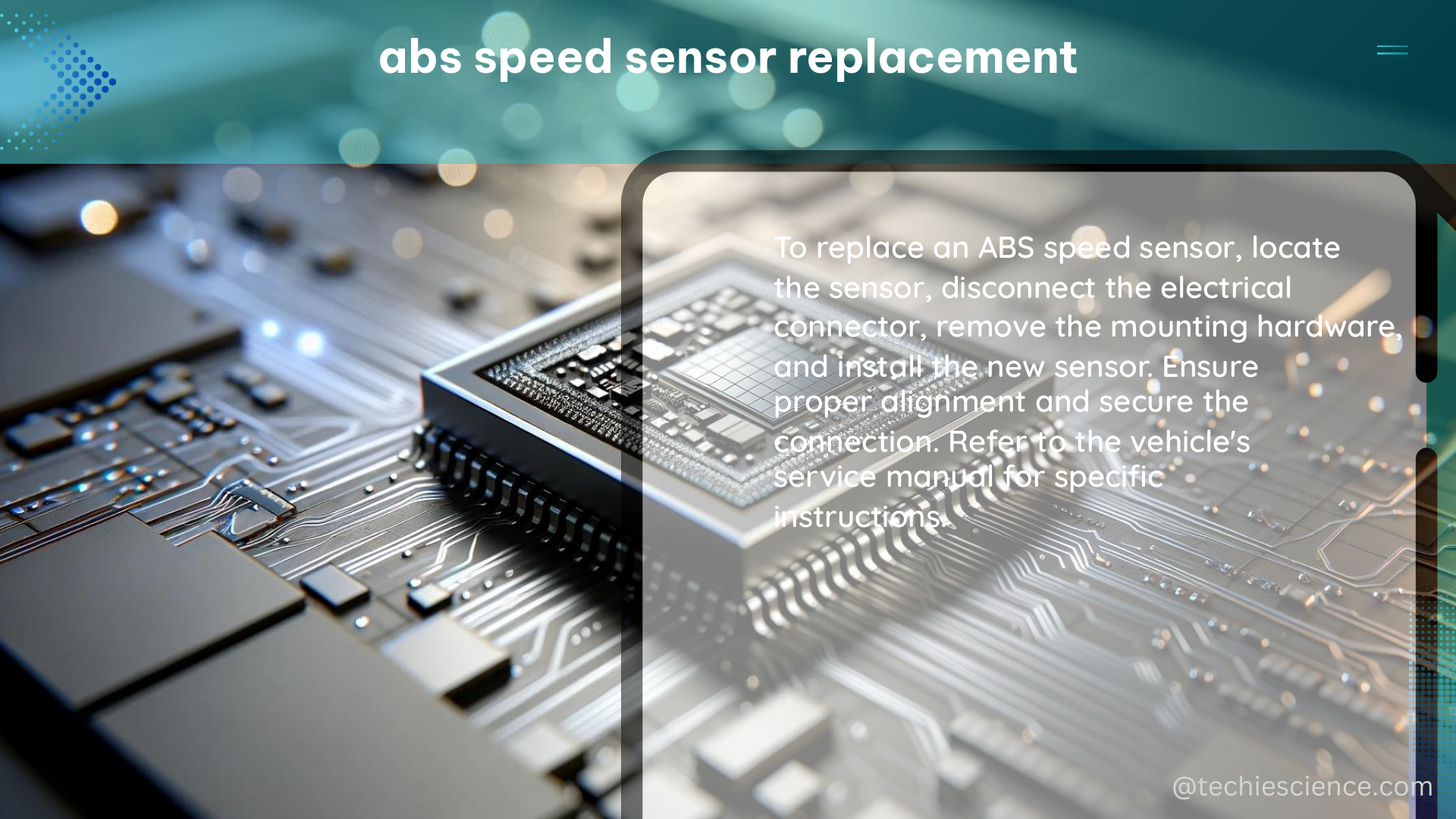The Anti-lock Braking System (ABS) is a crucial safety feature in modern vehicles, and the ABS speed sensor plays a vital role in its operation. This sensor measures the rotational speed of the wheels, transmitting this information to the ABS control module, which then adjusts the braking pressure to prevent wheel lockup and maintain vehicle stability and control during hard braking.
Understanding ABS Speed Sensor Resistance
The resistance of an ABS speed sensor typically ranges between 1000-1500 ohms. This resistance value is crucial for the proper functioning of the ABS system. When testing an ABS sensor with a multimeter, a resistance reading within this range indicates that the sensor is functioning correctly. However, it’s important to note that the cable twisting and flexing can affect the reading, so the sensor should be tested while fitted to the vehicle for accurate results.
Replacing the ABS Speed Sensor

When replacing an ABS speed sensor, it’s essential to ensure that the new sensor has the correct resistance value. A faulty sensor with a resistance value outside the specified range can cause the ABS warning light to illuminate, indicating a problem with the ABS system.
Sensor Type: Active vs. Passive
ABS sensors can be designed as either active or passive, depending on how they operate. Active sensors generate their own power and send a signal to the ABS control module, while passive sensors rely on an external power source and send a signal based on the rotation of the tone wheel. Understanding the type of sensor in your vehicle is crucial when replacing or testing the sensor.
Measuring the Sensor-to-Tone Wheel Gap
In addition to the resistance value, the gap between the ABS speed sensor and the tone wheel is also critical. The standard clearance for the ABS wheel speed sensor is between 0.7 – 1.2 mm (0.028 – 0.047 in). If the gap is too small or too large, it can cause the ABS system to malfunction, leading to premature activation of the ABS during low-speed braking.
When measuring the gap between the sensor and the tone wheel, it’s essential to use a precise measuring tool, such as a vernier caliper. However, accurately measuring the gap can be challenging, as different positions can give varying measurements. The vehicle’s service manual should provide guidance on how to position the caliper to obtain an accurate measurement.
Sensor Mounting and Alignment
Proper mounting and alignment of the ABS speed sensor are crucial for its accurate operation. The sensor should be securely mounted and positioned perpendicular to the tone wheel, with the recommended gap maintained throughout the wheel’s rotation. Improper mounting or misalignment can lead to sensor failure or inaccurate readings, affecting the ABS system’s performance.
Sensor Wiring and Connectors
The ABS speed sensor’s wiring and connectors must also be in good condition to ensure reliable signal transmission. Inspect the wiring for any signs of damage, such as cracks, cuts, or corrosion, and ensure that the connectors are clean and properly seated. Damaged or loose wiring can cause intermittent sensor failures or false readings, leading to ABS system malfunctions.
Sensor Replacement Procedure
When replacing an ABS speed sensor, follow the manufacturer’s instructions carefully. This typically involves disconnecting the sensor’s electrical connector, removing the mounting hardware, and then installing the new sensor with the recommended gap and alignment. After installation, it’s essential to clear any diagnostic trouble codes and test the ABS system’s operation to ensure proper functioning.
Conclusion
The ABS speed sensor is a critical component in a vehicle’s braking system, and its proper replacement is essential for maintaining the ABS system’s effectiveness. By understanding the sensor’s resistance range, gap requirements, and installation procedures, you can ensure that your vehicle’s ABS system continues to provide the necessary safety and stability during emergency braking situations.
References:
- Honest John Forum Post on ABS Speed Sensors
- Rennlist Forum Discussion on ABS Speed Sensors
- Rennlist Forum Post on ABS Sensor Measurements
- Subaru Forester Forum Thread on Rear ABS Wheel Speed Sensor Measurement
- Hella Technical World Article on Checking and Changing ABS Sensors

The lambdageeks.com Core SME Team is a group of experienced subject matter experts from diverse scientific and technical fields including Physics, Chemistry, Technology,Electronics & Electrical Engineering, Automotive, Mechanical Engineering. Our team collaborates to create high-quality, well-researched articles on a wide range of science and technology topics for the lambdageeks.com website.
All Our Senior SME are having more than 7 Years of experience in the respective fields . They are either Working Industry Professionals or assocaited With different Universities. Refer Our Authors Page to get to know About our Core SMEs.